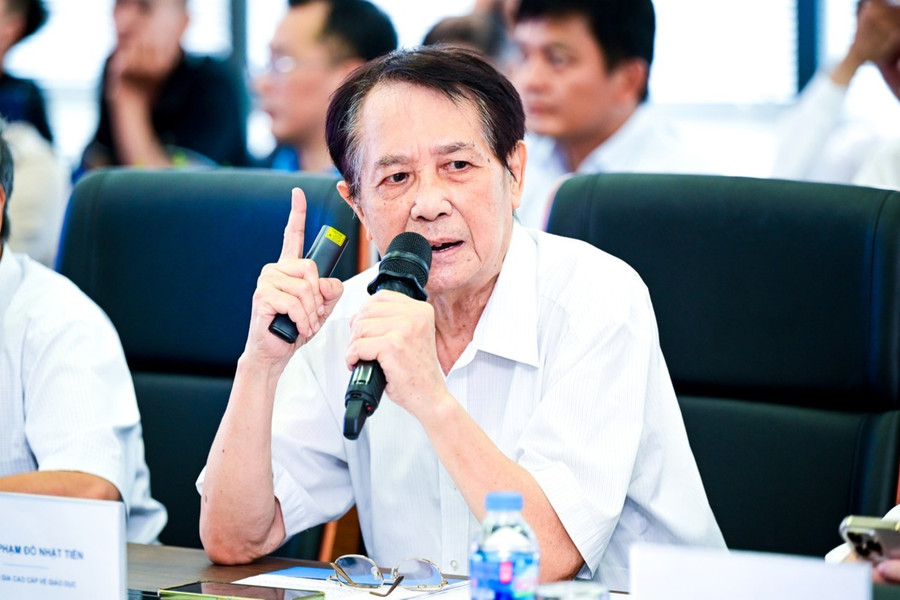Unified and synchronized in direction, minimizing overlap
According to Dr. Pham Do Nhat Tien, the characteristic of the School Council model is the new division of authority. Accordingly, the School Council is the highest authority, representing the entire team of teachers, researchers, staff, students, and pupils of the school, deciding on major issues of the school and supervising the implementation of the Board of Directors.
The principal is the head of the school board, responsible for organizing the implementation of the school board's decisions and running the school's daily activities.
The school council has long been considered an important advisory and supervisory body in the management of vocational education institutions. The school council contributes to the balance of power in the school, representing the stakeholders to ensure transparency and fairness in management. In a sense, the school council is a new mechanism to control school activities when the state gives up its control role to give autonomy to the school.
Dr. Pham Do Nhat Tien said that, with the policy of Resolution No. 71-NQ/TW, not organizing school councils in public educational institutions, strengthening the comprehensive and direct leadership role of party organizations, implementing the Party Secretary concurrently as the head of the educational institution, we are moving to a new governance model towards streamlining the apparatus, improving efficiency, effectiveness and efficiency in governance and management.
At that time, the party organization of the vocational training institution has both a leadership and an administrative role. In terms of leadership, the party organization plays a central role in strategic orientation, ensuring that all activities of the vocational training institution are closely linked to the political tasks and vocational training development goals of the Party and the State.
In terms of administration, the Party organization strengthens supervision and inspection of the implementation of autonomy of vocational training institutions; at the same time, ensures the development and implementation of policies and regulations on accountability are public, transparent and serious.
Thus, the new governance model creates unity and synchronization in direction and management, minimizes overlapping or shirking of responsibilities, and creates conditions for vocational training institutions to adapt and promptly respond to changes in the labor market and the needs of learners.

It is necessary to build a mechanism and system to control and balance power.
However, Dr. Pham Do Nhat Tien also noted that the new regulation also carries the risk of concentrating power, putting work pressure on an individual, which can affect democracy in governance activities.
Besides, there is a big challenge in terms of quality and capacity when the head of a vocational education institution is both a political leader and a professional administrator, and must be thoroughly trained in modern educational management and accountability.
To truly promote the efficiency, effectiveness and effectiveness of the new governance model, Dr. Pham Do Nhat Tien said that it is necessary to build mechanisms to balance power, avoid abuse of power and subjectivity in governance and management.
The imbalance between autonomy and accountability can easily lead to negative consequences, such as lack of transparency, reduced reputation of vocational training institutions, affecting training quality and trust of stakeholders.
This model also requires laws and related legal documents to be adjusted and specify the roles, authority and responsibilities of leaders in both political and administrative fields to ensure the autonomy of vocational training institutions, while building a solid power control system.
Source: https://giaoducthoidai.vn/phat-huy-mo-hinh-quan-tri-moi-trong-co-so-giao-duc-nghe-nghiep-post747952.html































































































![Dong Nai OCOP transition: [Part 2] Opening new distribution channel](https://vphoto.vietnam.vn/thumb/402x226/vietnam/resource/IMAGE/2025/11/09/1762655780766_4613-anh-1_20240803100041-nongnghiep-154608.jpeg)













Comment (0)